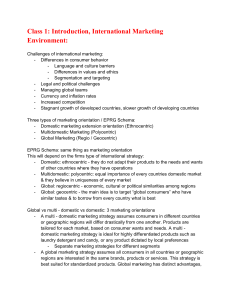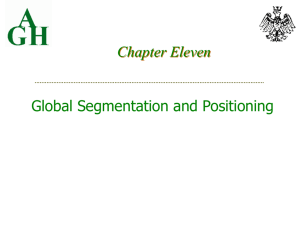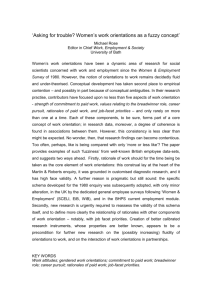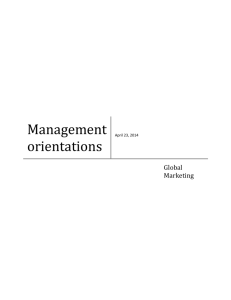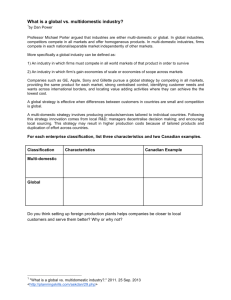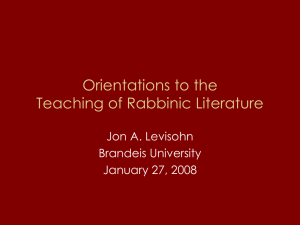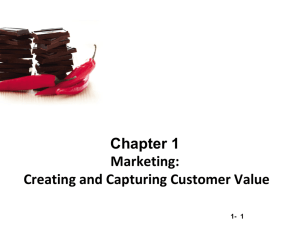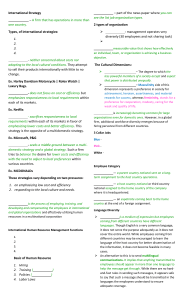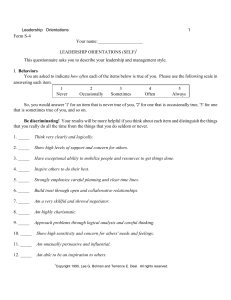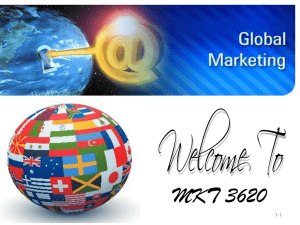Stages of International Marketing
advertisement
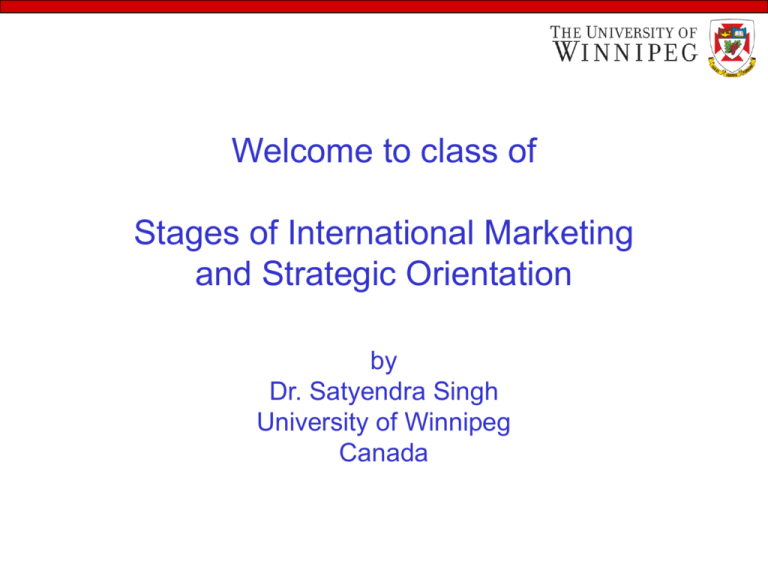
Welcome to class of Stages of International Marketing and Strategic Orientation by Dr. Satyendra Singh University of Winnipeg Canada Stages of International Marketing… No Direct Foreign Marketing Infrequent Foreign Marketing Regular Foreign Marketing International Marketing Global Marketing Stages of International Marketing… • Stage 1: No Direct Foreign Marketing – – – – Not active foreign customer seekers Foreign markets via domestic wholesalers/distributors Unsolicited orders Internet • Stage 2: Infrequent Foreign Marketing – – – – – Variation in production levels or demands No commitment to foreign market representation If domestic demand , foreign activity Foreign agents may approach Managers’ own foreign contacts Stages of International Marketing… • Stage 3: Regular Foreign Marketing – Dedicated production capacity to foreign markets – Own sales force/subsidiaries in foreign markets – Domestic market is still the prime focus, but as the foreign demand , production/products are adapted to meet those customer needs – Depend on foreign sales to meet goal (vs. as a bonus) • Stage 4: International Marketing – – – – Fully committed and involved in international marketing Planned productions for various foreign markets Production of goods in foreign markets as well At this stage, a firm is international or multi-national Stages of International Marketing • Stage 5: Global Marketing – Treats the world including home market as one – Market segments are defined by demographic and psychographic variables – Half of its revenue should come from foreign market – Global perspective is the focus Strategic Orientations EPRG Schema Orientation Ethnocentric Domestic Marketing Extension Polycentric Multidomestic Marketing Regio/Geocentric Global Marketing Strategic Orientations… • Domestic Market Extension Orientation (Stage 1/2) – – – – Extension of domestic products into foreign markets International markets are secondary Prime focus—market excess domestic products abroad Firm’s orientation is domestic • Multi-Domestic Market Orientation (Stage 2/3) – – – – – – Realizes the difference b/w domestic & foreign markets Different countries need different products Separate marketing strategies for each country Subsidiaries operate independent of one another Products are adapted, advertising is localized Might not standardize products Strategic Orientations • Regional/Global Orientation (Stage 4/5) – Truly global – single market – Emphasis on standardization—product/process – Strive for efficiencies of scale by standardizing market mix across national borders, whenever it is cost or culture effective – Pursue a global strategy for major brands or multidomestic strategy for other brands
